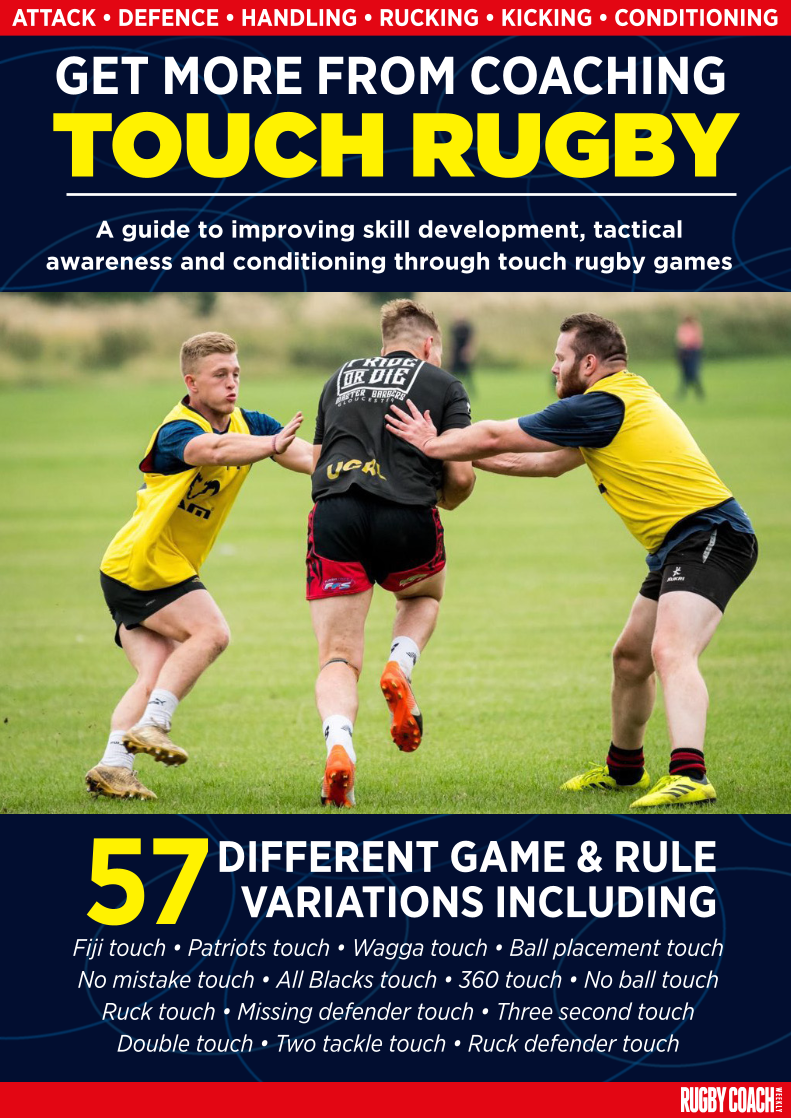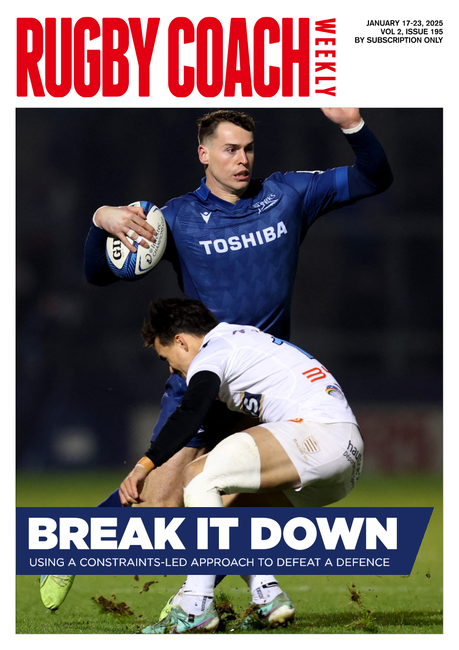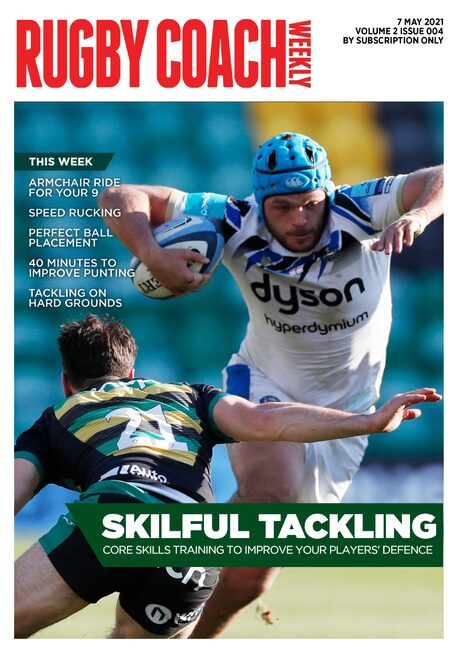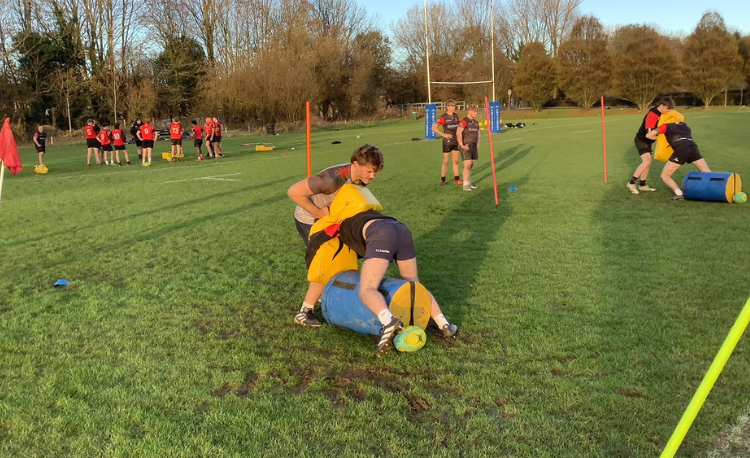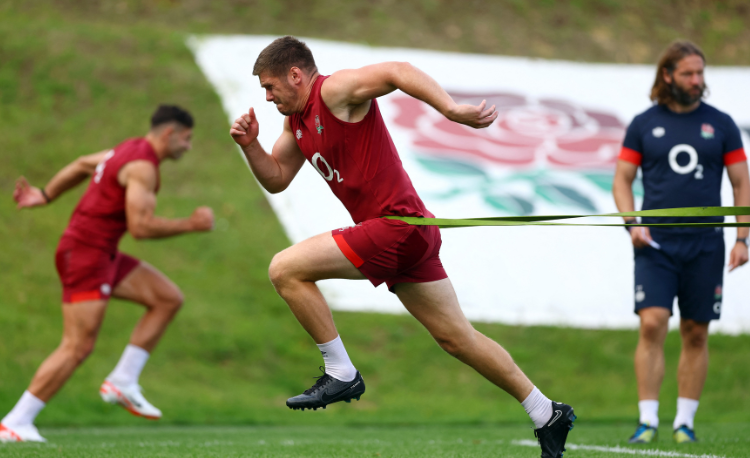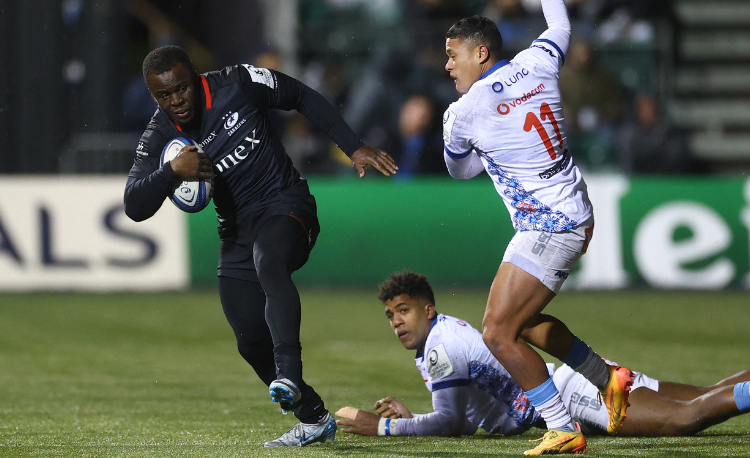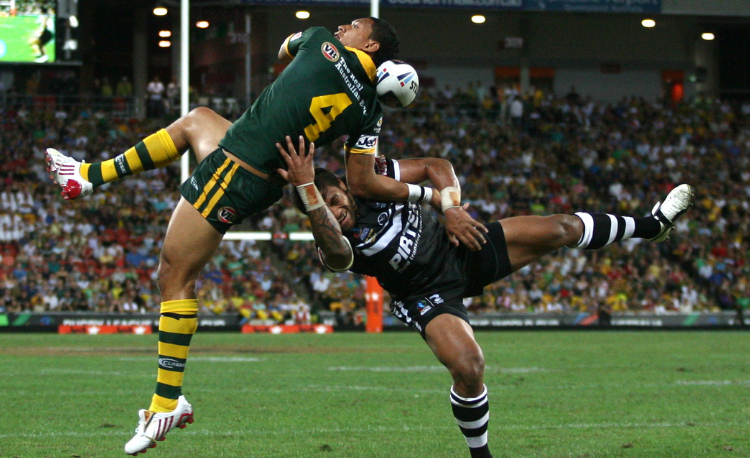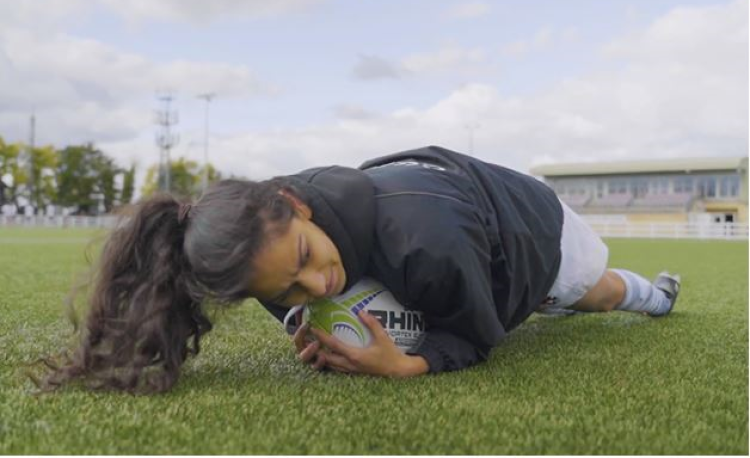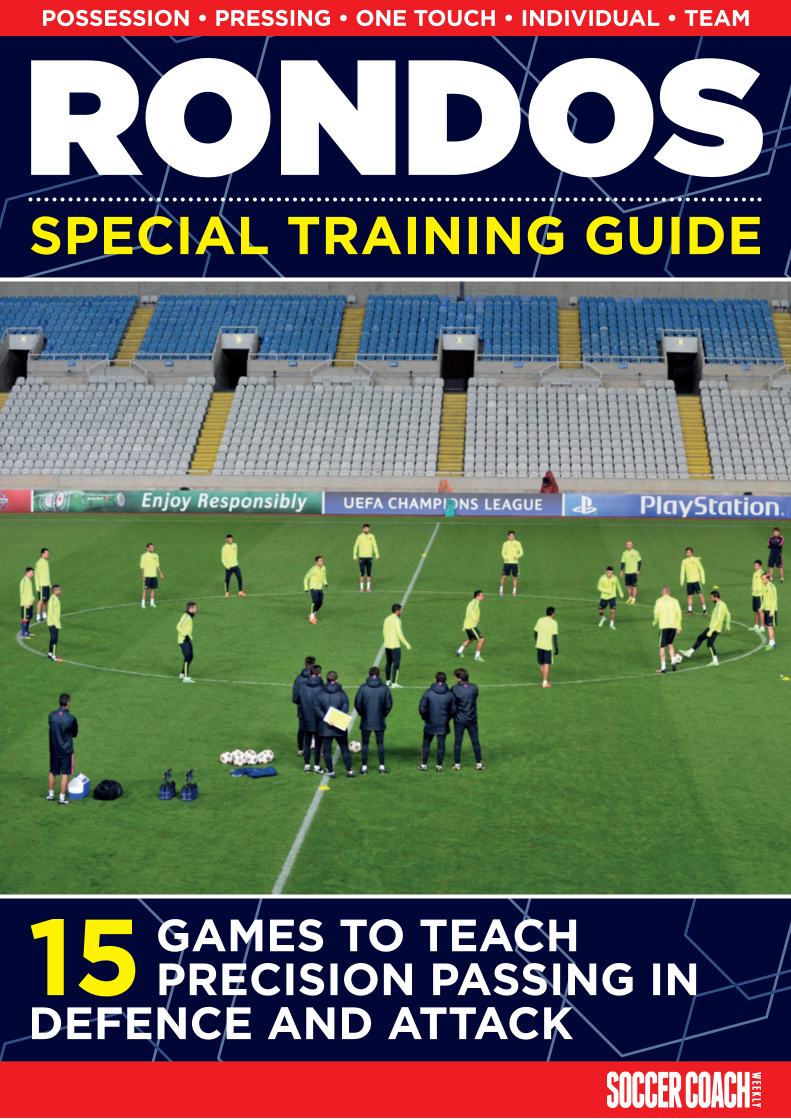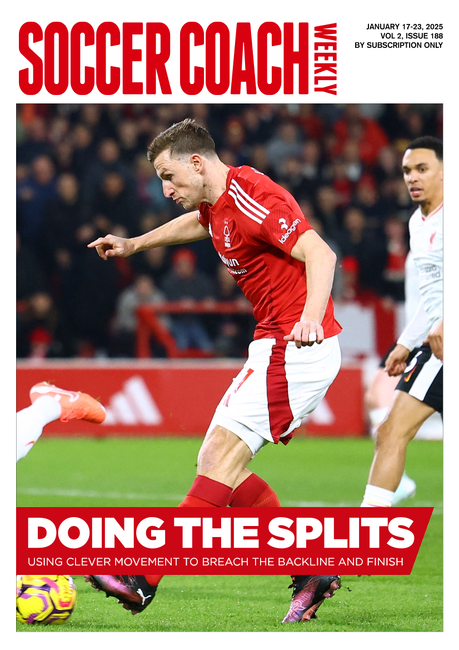Better ball placement
Editor Dan Cottrell adds further context to two sessions.
There’s a simple tactic for good attacking rugby: disorganise an organised defence.
A defence is organised at set-pieces. Clever plays might break through this defence, but not every time. And, if the ball is slow to emerge from a ruck, then the defence has time to reorganise ready for the next possible attack.
You should have a plan to disorganise the defence, and then attack it again. In its simplest form, this means pulling defenders out of position. You can do this by passing before or during the tackle.
Once you are behind the defence, they are chasing back, with defenders attracted towards the ball. Pass away from this situation and you’ll find gaps. In other words, you play without ever being tackled; or, if you are, you pass away, so no ruck is formed.
However, there’s a good chance there will be a tackle, and no pass will be available. For a short period of time, the defence may well still be disorganised.
If the ball carrier has made inroads into, or behind, the defensive line, the defenders will be running back into position. The tackler will be out of the defensive line, and other defenders might well be closer to the ball than they would normally, leaving gaps across the field.
Even with a good tackle, the defence will take time to reset themselves. They will have to match up either side of the tackle, and reset their gaps to cover potential attacks.
There is, say, three to six seconds before a defence is ready again. This timeframe depends on the level you are playing at.
These seconds are vital for the attack. Though the flow of the attack has been temporarily halted, there’s still time to exploit defenders who are out of position. But, all too often, these seconds are wasted because of a lack of efficiency in the ball placement.
The clearing passer – that is, the player who will pass the ball away from the tackle/ruck – should be able to sweep in and sweep away the ball. If they are delayed, the defence has time to realign, and match up against your attacking threats.
Ball placement isn’t a straightforward skill, because it isn’t a natural one. We don’t spend our lives crawling around on the ground with a ball in our hands. The players need to understand the feel of what’s right.
This ball placement exercise starts this process.
I like to get the players to understand the outcome first. In this case, they must take a tackle and present the ball back towards their own side as fast as they can. I then let them come up with some of their own solutions on how to get there.
In an ideal world, all our players would have the core strength of a martial arts expert, and be able to twist and turn like you would snap a twig.
However, given that that is unlikely, they will have to manufacture a way to roll and turn as quickly as they can themselves.
I will then give them some skills nudges to help them on their way.
For example, I might ask them to roll in different ways while watching each other to see what works best.
Continuous overload game
Andy Friend took up the role as Australia’s sevens coach after coaching top club rugby in Japan, Australia and England. He is now coaching the Brumbies Women’s team.
He has always been keen to challenge his players to find solutions, and uses games extensively in his training.
A good example is one that involves a full team of 15 players, in a 9v6 scenario.
Of course, you can adjust the numbers to suit your team, but nine attackers is a good number to keep more players involved.
Fewer players add the element of conditioning, where players are having to make decisions when they are fatigued.
While games should be loose and free, certain rules should always be fiercely refereed.
In this particular game, the type of tackle is shoulder contact. The players must take responsibility for doing this correctly. If they don’t, they should be reminded that personal discipline is a key part of seeking improvements.
If they want to cut corners, they are only reducing their own effectiveness in the long run.
That said, Andy’s attack v defence game isn’t too rules-heavy, so the players can concentrate on how to exploit the extra space.
Don’t be surprised when they don’t, though. They will be slow to realign, fail to run straight, or pass accurately.
When I’ve run this game more recently, I’ve tried to avoid reminding them of what skills to improve. They’ve had to work it out for themselves.
It’s not a quick process, yet I sense that, when they do change, it is more permanent than if I just simply told them.
Related Files
Newsletter Sign Up
Coaches Testimonials

Gerald Kearney, Downtown Las Vegas Soccer Club

Paul Butler, Florida, USA

Rick Shields, Springboro, USA

Tony Green, Pierrefonds Titans, Quebec, Canada
Subscribe Today
Be a more effective, more successful rugby coach
In a recent survey 89% of subscribers said Rugby Coach Weekly makes them more confident, 91% said Rugby Coach Weekly makes them a more effective coach and 93% said Rugby Coach Weekly makes them more inspired.
Get Weekly Inspiration
All the latest techniques and approaches
Rugby Coach Weekly offers proven and easy to use rugby drills, coaching sessions, practice plans, small-sided games, warm-ups, training tips and advice.
We've been at the cutting edge of rugby coaching since we launched in 2005, creating resources for the grassroots youth coach, following best practice from around the world and insights from the professional game.


